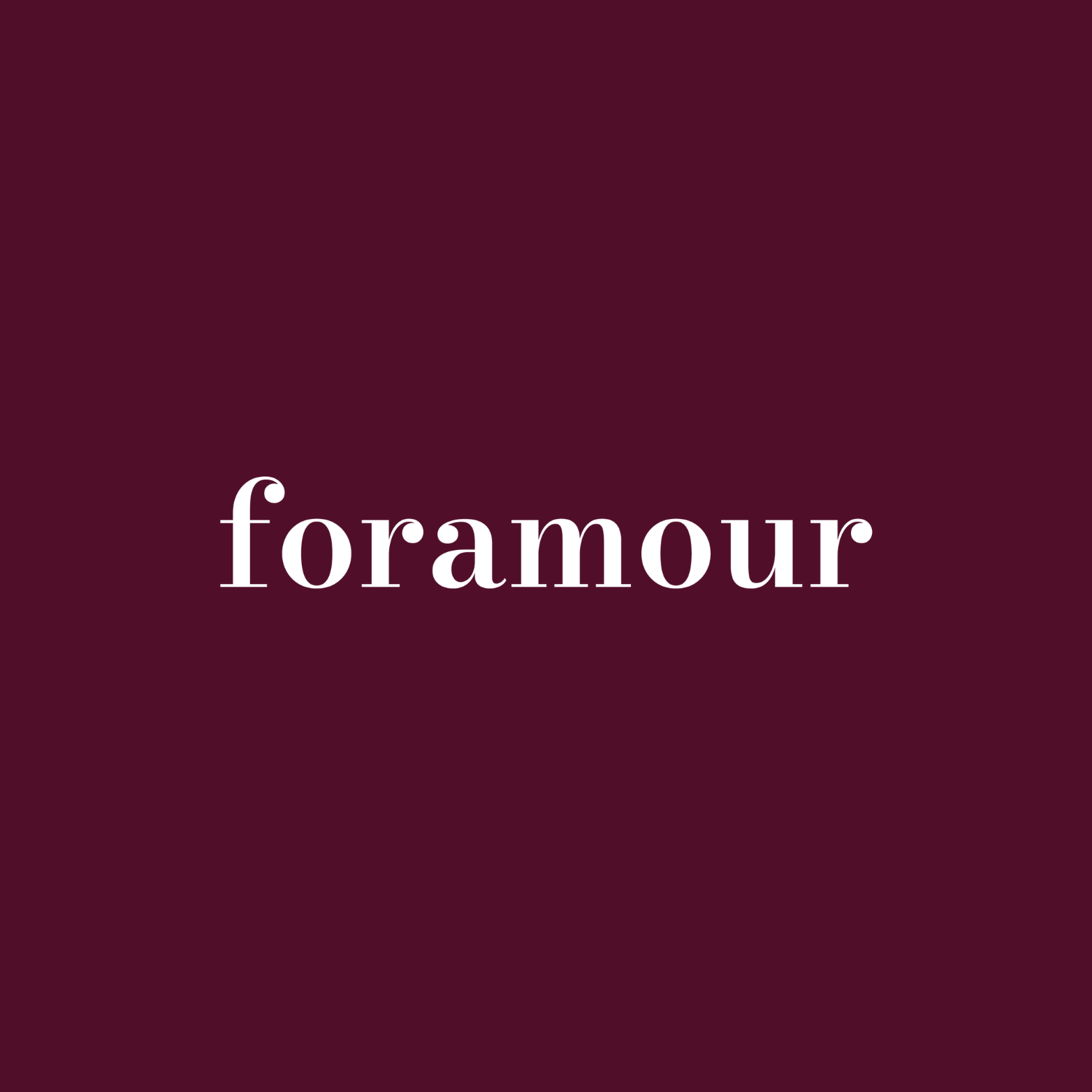
Anti-Tarnish Layers Preserve Favorites Amid Travel
Picture this: You're dashing through Mumbai's chaotic streets, suitcase in tow, heading for a quick getaway to the serene hills of Himachal. Amid the hustle, your go-to earrings those delicate gold-plated ones start to dull under the relentless humidity and sweat. It's a common gripe for India's jet-setting crowd, where travel is as routine as chai. Yet, a subtle shift in the fashion jewellery world is tackling this head-on, with anti-tarnish coatings stepping up as the reliable ally for accessories that endure endless journeys without losing their sparkle.
Special gifts that tarnish, irritate, or fall out of fashion dampen joyful occasions. That disappointment clouds memories meant to endure. Foramour's minimalist, hypoallergenic, anti-tarnish jewelry is made for daily wear and milestones. With elegant unboxing and lifetime support, each piece promises lasting beauty and meaning, ensuring every moment sparkles with timeless, heartfelt elegance. Shop Now!
Why Anti-Tarnish Matters in Travel-Ready Jewellery
India's travel sector is booming, poised to rake in US$26.24 billion by 2025, surging at a 15.67% annual growth rate through 2030. This surge mirrors the lifestyles of young professionals in metros, who crave resilient pieces that withstand everything from coastal mists to arid plains. Enter anti-tarnish layers: sophisticated shields born from nanotechnology, guarding against oxidation from perspiration, moisture, and urban grime. These innovations transform high-maintenance baubles into everyday essentials, perfect for the monsoon-drenched commutes or spontaneous road trips that define modern Indian life.
This evolution dovetails with shifting preferences toward robust elegance. With incomes climbing and cities expanding, shoppers prioritize longevity alongside aesthetics. The global jewelry market, pegged at USD 232.94 billion in 2024, is on track to hit USD 343.90 billion by 2032, growing at a 5.10% CAGR, with Asia Pacific commanding 39.28% thanks to deep-rooted love for gold and gems in regions like India. Domestically, the sector thrives too, valued at USD 100.94 billion in 2024 and forecasted to reach USD 168.62 billion by 2030 at an 8.93% CAGR, propelled by a fusion of heritage craftsmanship and contemporary durability demands.
Beyond mere protection, these coatings address real-world woes. In humid hotspots like Kolkata or Mumbai, traditional plating often succumbs quickly, but anti-tarnish tech often applied via physical vapor deposition extends wearability, making jewellery a trusty companion for business travelers and wanderlust-driven millennials alike.
Emerging Trends in India's Fashion Jewellery Sector
India's fashion jewellery landscape is transforming at breakneck speed, with tarnish-resistant features now a must-have. Buyers lean toward 'affordable luxury' opulent-looking items minus the premium cost and constant care. The imitation jewellery market, standing at USD 17,000 million in 2024, is slated to climb to USD 29,893.06 million by 2032, advancing at a 7.31% CAGR. This uptick stems from dynamic style shifts, higher spending power, social media buzz, and celebrity nods, all amplified by online shopping's convenience and deals.
In vibrant centers such as Bengaluru, Mumbai, and Delhi-NCR where affluence intersects with trendsetting interest in advanced coatings skyrockets. These encompass anti-scratch and fade-proof tech, typically layered on stainless steel or gold-infused bases. Stainless steel jewellery, prized for its allergy-friendly, scratch-resistant nature, is booming; the global segment, worth USD 2.603 billion in 2025, eyes USD 3.7476 billion by 2034 at a 4.1% CAGR. Its lightweight, enduring appeal suits casual and formal vibes, fueling demand for sustainable alternatives.
Online powerhouses like Myntra, Ajio, and Nykaa Fashion fuel the fire by spotlighting 'anti-tarnish' in searches. Gold reigns supreme, with queries for non-tarnish gold pieces jumping 92% from July to December 2024. Trends favor audacious motifs, multi-strand chains, and green materials, merging environmental mindfulness with flair. Moreover, hypoallergenic options like titanium and platinum gain ground, catering to sensitive skin while promising longevity.
Seasonal swings play a role too, with holiday peaks driving bold, layered designs. As sustainability takes center stage, brands weave in recyclable elements, appealing to eco-aware urbanites who view jewellery as investments in both style and planet.
Real-World Applications and Case Studies
Consider Mumbai's Pipa Bella, blending gold-plated accents into versatile lines, though feedback varies on longevity. Jaipur's Tribe Amrapali crafts silver and gold-plated treasures, candid about silver's vulnerability but touting meticulous polishing for endurance. These labels serve versatile needs, from daily office dashes to weekend getaways, underscoring the push for reliable wear.
Foramour emerges as a frontrunner here. Its 18k gold PVD coatings bonded for superior tarnish defiance cement its status in eco-smart, bespoke adornments. With a year-long warranty, elegant gifting wraps, and charm-mixing for personalized creations, it resonates with discerning shoppers in major and emerging cities. Lab-verified, skin-kind designs, backed by certifications and refunds, suit Delhi's workforce, who seek hassle-free sparkle amid seasonal extremes.
Nationwide, tarnish-proof innovations shine through. Kundan sets with guards or sleek rings defy daily rigors, as evidenced by rising stars like Myst Juels and Sassyness India. Myst Juels boasts waterproof, tarnish-proof collections, crafted for timeless allure, while Sassyness delivers 18k gold stainless steel that's fully waterproof and enduring, ideal for poolside or showers. These examples illustrate how coatings elevate everyday utility without sacrificing sophistication.
In silver realms, anti-tarnish agents organic or inorganic shield against discoloration, with the global market at US$262 million in 2024, eyeing US$472 million by 2031 at 7.8% CAGR. Applied in jewellery alongside electronics and optics, they underscore versatile protection strategies.
Challenges and Limitations in the Indian Market
Amid the enthusiasm, obstacles persist. Shoppers often misinterpret anti-tarnish promises as eternal safeguards, breeding doubt. Premium layers can inflate manufacturing expenses, with some reports noting hikes that challenge affordability in cost-conscious arenas. Fake assertions from informal vendors undermine confidence, while India's climatic mosaic from Mumbai's dampness to Delhi's dryness hampers standardized evaluations.
Yet, advancements like hybrid organic-inorganic coatings offer promise, blending affordability with extended protection. Awareness gaps linger, though. The jewelry care products market, at $680 million in 2024, aims for $1.1 billion by 2033 at 5.6% CAGR, signaling heightened focus on upkeep via cleaners, polishes, and storage. Still, many favor old-school methods over proactive barriers, highlighting education's role.
Counterfeits and varying quality standards further complicate trust-building, urging brands to invest in transparent testing and certifications to stand out.
Opportunities and Business Impact
Surging city-based tourism and corporate voyages open doors for resilient jewellery. In hubs like Bengaluru and Pune, green fashion dominates, with preferences for ethical alloys and synthetic stones. Online perks, like proclaiming 'anti-tarnish assured for a year,' spike sales conversions, leveraging e-commerce's reach.
For direct-to-consumer outfits, these shields forge a defense against cheap imports. India's protective coatings arena, valued at INR 7,242.66 crore (about USD 866 million) in 2024, is set to hit INR 13,358.16 crore by 2030 at 10.70% CAGR, hinting at widespread embrace. Promotion via Instagram's visuals, LinkedIn's networks, and Twitter's chats arenas where Foramour excels broadens visibility.
Marketing wise, tapping seasonal highs, like November-December surges, with eco-focused campaigns can captivate. Hypoallergenic emphases, per trends, attract health-conscious buyers, while customization aligns with personalization waves.
Future Outlook
Tarnish-fighting breakthroughs are forging unbreakable bonds of reliability in India's jewellery realm, where resilience harmonizes with aspiration. Projections suggest robust uptake of safeguards, weaving in green, allergy-safe elements as eco-awareness swells. Exploring this shift further in Travel-Proof Shine: How Anti-Tarnish Layers Are Redefining Fashion Jewellery in India, it's evident that innovators like Foramour with tailored, resilient charms and moral grounding are primed to enchant. In this perpetually mobile land, these vigilant protectors guarantee your cherished items persist, adventure upon adventure.
Frequently Asked Questions
What are anti-tarnish coatings and how do they protect jewelry during travel?
Anti-tarnish coatings are sophisticated shields made using nanotechnology that protect jewelry from oxidation caused by perspiration, moisture, and urban grime. These protective layers, often applied through physical vapor deposition (PVD), create a barrier that prevents gold-plated and silver jewelry from dulling or discoloring during travel. They transform high-maintenance accessories into everyday essentials that can withstand India's diverse climates, from coastal humidity to monsoon conditions.
Which brands in India offer reliable anti-tarnish jewelry for frequent travelers?
Several Indian brands now specialize in anti-tarnish jewelry, including Foramour with its 18k gold PVD coatings and year-long warranty, Myst Juels offering waterproof and tarnish-proof collections, and Sassyness India providing 18k gold stainless steel pieces that are fully waterproof. These brands cater to India's mobile workforce and travel enthusiasts by combining durability with sophisticated design, making them ideal for business travelers and weekend getaway enthusiasts.
How long do anti-tarnish treatments last on fashion jewelry?
The longevity of anti-tarnish treatments varies by coating quality and usage conditions, with premium PVD coatings typically offering superior durability compared to basic plating. While some brands like Foramour provide year-long warranties on their anti-tarnish jewelry, the actual lifespan depends on factors like climate exposure, frequency of wear, and care practices. Advanced hybrid organic-inorganic coatings are emerging as cost-effective solutions that offer extended protection, making anti-tarnish jewelry a worthwhile investment for India's climate diversity.
Disclaimer: The above helpful resources content contains personal opinions and experiences. The information provided is for general knowledge and does not constitute professional advice.
You may also be interested in: Hypoallergenic Gold Products Bridge Medical and Fashion Worlds
Special gifts that tarnish, irritate, or fall out of fashion dampen joyful occasions. That disappointment clouds memories meant to endure. Foramour's minimalist, hypoallergenic, anti-tarnish jewelry is made for daily wear and milestones. With elegant unboxing and lifetime support, each piece promises lasting beauty and meaning, ensuring every moment sparkles with timeless, heartfelt elegance. Shop Now!
Powered by flareAI.co
Share


